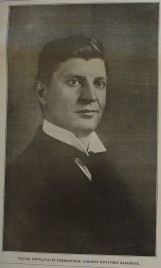Presentation in Madison, October 2010

Presentation in the workshop ›The Transatlantic Migration Experience‹ together with Annemarie Steidl and James Oberly at the Max Kade Institute for German-American Studies, University of Wisconsin – Madison, October 16, 2010.
Abstract: Ethnic identities have been treated as a ›given‹ for many decades. This presentation departs from the great difficulty of maintaining a group at all, taking South Slav migrant groups from the 1890ies to 1960ies in the Northeastern United States as an example.
Around 1900, migrants from all parts of Europe, including the Austro-Hungarian migrants, proudly showed off their ›nationality‹ in North America. They took part in economy, including banking and publishing, in public life and in discourses. Both on the individual and the organized level, migrant life was transnational and there was ethnic co-op(era)tion. After WWI, ethnicity took on the traits of a niche economy although it was still thriving and encompassed large audiences. After WWII, South Slavic ethnic life became a culture on the retreat. To maintain a group, there must be »engineers« or idenity managers who do this and they need a »machinery« (media, discourse, communication). Two concrete examples from Rankin, Pennsylvania and Ely on Minnesota’s Iron Range will illustrate how migrant activists were trying to keep up their groups before WWII.